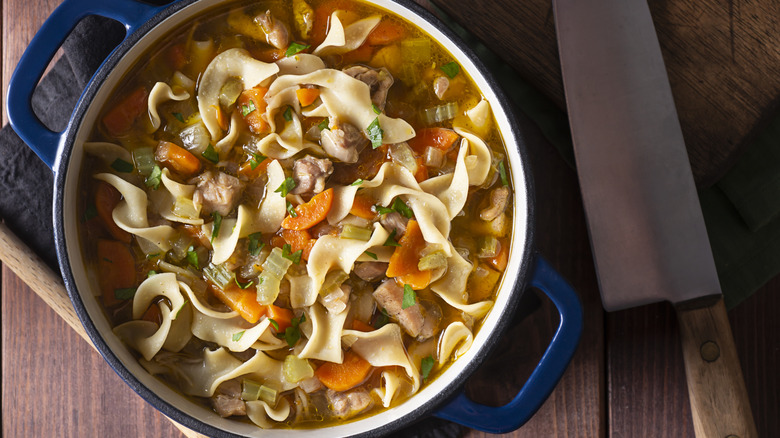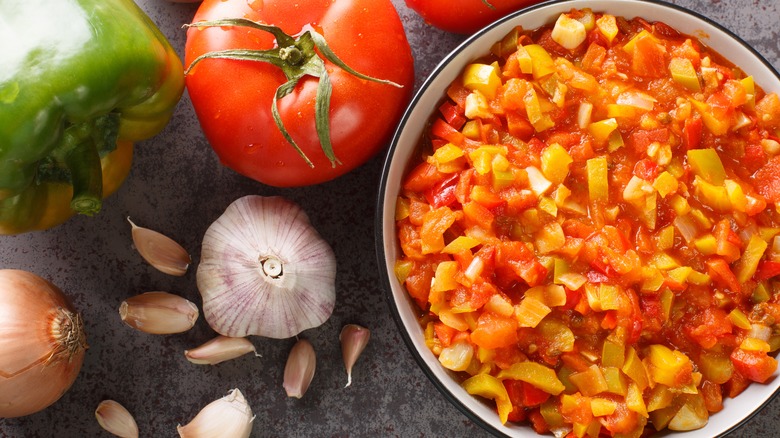Sofrito Is The Secret Ingredient To Elevate Chicken Noodle Soup
Chicken noodle soup, a comforting classic enjoyed by many, often offers a soothing remedy on chilly days or when feeling under the weather. However, this timeless dish can sometimes fall into the realm of the mundane, lacking the bold flavors that awaken our tastebuds. The good news? Your chicken noodle soup doesn't have to be bland and unexciting. By introducing the magic of sofrito, a flavorful blend of aromatic ingredients, you can transform your soup into a culinary masterpiece that excites your palate and warms your soul.
Sofrito is a blend of items that varies from culture to culture but commonly includes pungent garlic, acidic tomatoes, and an array of fresh herbs. Imagine the robust aroma of garlic sizzling in olive oil, its fragrance filling your kitchen as it mingles with the tangy sweetness of tomatoes. Add to this the vibrant freshness of herbs like cilantro or parsley, and you have a symphony of flavors that transforms your soup into a culinary masterpiece. The garlic brings a bold kick, the tomatoes provide a tangy brightness, and the herbs contribute a burst of freshness that invigorates every spoonful.
Varieties of sofrito and which to use
While the core ingredients of sofrito remain consistent, its composition can vary significantly based on regional influences and culinary traditions. Sofrito has its origins in Spanish cuisine and is still an important part of Spanish cooking, but its use spread along with its cultural influence and colonial dominance in the Americas. Today, there are many varieties found in Latin America that share similarities, yet harbor key differences.
Spanish sofrito sets the stage with a blend of chopped onions, tomatoes, tomato paste, an optional leek, and red and green bell peppers, sautéed in olive oil to create a rich and hearty base. The result is a warm and earthy flavor that transports your tastebuds to the sun-kissed coasts of the Mediterranean.
Puerto Rican sofrito boasts a vibrant mixture of onions, bell and cubanelle peppers, cilantro, culantro, and ají peppers. The big difference between this and Spanish sofrito is that the Puerto Rican variety is pureed and uncooked. To infuse your soup with Puerto Rican flair, simply stir in a tablespoon or two of the sofrito as your soup simmers. The result is a bold, aromatic flavor explosion.
By choosing the sofrito that resonates with your palate — be it the warm embrace of Spanish sofrito or the vibrant punch of Puerto Rican sofrito — you can awaken your soup from its flavor slumber.

